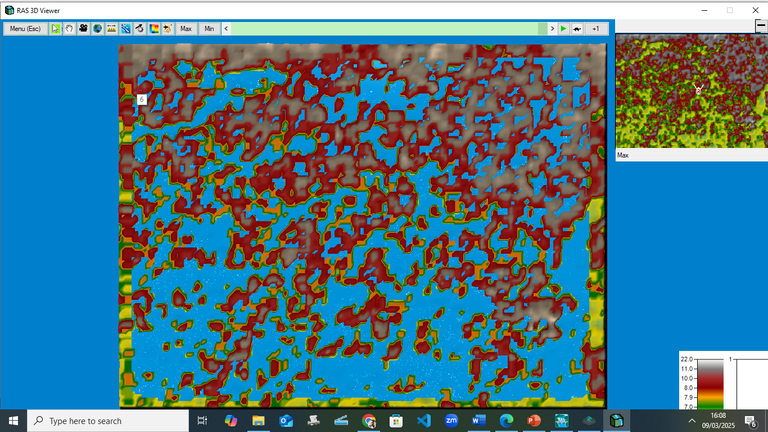✨ INNOVATION: The Science of Flight
Have you ever looked up at the sky and wondered, "How do airplanes even fly?" 🤔✈️
That question, so simple, yet mind-blowing—has probably passed through everyone's mind at some point.
Even more questions follow:
How is it able to move freely in the air without support?
What would happen if someone accidentally or intentionally broke an airplane window mid-air? 😳
Do airplanes come equipped with parachutes—for everyone?
How do pilots see where they’re going? Can’t two planes just crash into each other up there? 😬
These are the kinds of thoughts that first sparked my fascination. And honestly, that's what makes the innovation phenomenal. There are a lot of questions that defy or question our existing knowledge.
How I Got Hooked on the Magic of Flight ✈
As a child, I couldn’t stop thinking about how such a heavy object could glide through the sky. My curiosity led me to my old laptop, where I spent hours on Encarta Kids—a learning software that was like a digit encyclopedia for my young brain 🧠✨. I would read about how planes worked, who invented them, and the whole journey to achieve the science of flight.
Many of us know that it was the wright brothers that invented the aeroplanes. Although, that wasn't how it all started. A lot of other inventors had been working on models that defy gravity. Biological mimicry of birds was the foundational footing to the development of flight contraptions. There was earlier flight contraptions like the air baloon and gliders.
Think of innovators like Leonardo da Vinci, whose flying machine sketches paved the way for future dreamers. Or Otto Lilienthal, whose glider experiments inspired the Wrights themselves.
💡 Did You Know?
Airplanes fly thanks to a balance of four forces: lift, thrust, drag, and gravity. The shape of the wings helps create lift, allowing the plane to rise off the ground.
Airplane windows are reinforced and pressurized—breaking one mid-flight would cause rapid decompression, which is why it's nearly impossible and highly dangerous.
No, commercial planes don’t have individual parachutes for passengers. It’s more practical and safer to land the plane than deploy hundreds of parachutes.
Pilots don’t “see” other planes visually—they rely on advanced radar, GPS systems, and air traffic control to prevent mid-air collisions.
And here's a fun one:
✈️ The first commercial flight lasted only 23 minutes and flew from St. Petersburg to Tampa, Florida, in 1914. It carried one passenger. Innovation had to start somewhere, right?
My Own Tiny Innovation 🌍💻
I’ve always admired innovation, so I tried a little of my own. I recently used Google Earth Engine to access free datasets, then ran them through a hydraulic modeling software to create a flood inundation map. 🌊🗺️
The goal? To predict areas vulnerable to flooding. It felt amazing to play around with data, solve a problem, and bring an idea to life. Honestly, I felt like a mini Wright brother myself 😂.

Screenshot of my Project
Side Note 📚
If you’re passionate about learning or you’ve got a curious kid, Encarta Kids is a gem. It’s a desktop app filled with articles, games, videos, and interactive learning tools. Think of it as a digital treasure chest for young minds. It definitely shaped my thirst for knowledge.
Innovation is everywhere.
From the sky above us to the ideas we tinker with in our rooms.
What’s an innovation that has blown your mind lately? Share with me 🚀🔍

Posted Using INLEO



Some times I kept wondering how aeroplane will fly above even carrying alot of people but still don't fall and is also call the fastest means if transportation seriously aeroplane is best invention I came across in this world
Honestly!
Its funny how we wrote on the same topic.
Thank you for engaging
Seriously what a coincidence
Flight science is fascinating! 🤯 Those airplane window questions got me thinking... 🤔🐎
Thank you very muchh.
I highlighted later in my post. LOL 😅. No need to be scared
The glass is made of very strong material. A passenger can't easily break it
Honestly this is a very deep and intresting read, and how you higlight the facts of flight.
thank you for sharing this
Thank you very much for engaging
I don't know about engineering or their terms but aeroplane is a great invention. I ask questions, too, when I see those big birds in the sky.
With that size and weight, they shouldn't be floating in the air.
Lol. Ikr.
A lot of things that defies our existing knowledge is in that innovation
And thank you for engaging
This is absolutely interesting, very educative too.
Thanks for sharing this facts with us.
You're welcome
Thank you very much for engaging
Interesting read from starting to the end, like how you approached the topic.
Thank you very much for the kind words. And thank you for engaging 🤝🏽
I used to be fine with flying, but one day I looked up and saw the busy skies above the English countryside and had this sheer horror overcome me as I realised how utterly insane it is that something so huge, so heavy, so high up was carrying around 150~ people. The realisation of it all gave me such anxiety that ever since I've been utterly terrified of it flying.
Oh wow.
I'm sure you'll fight through the anxiety 💪🏾
Yh, that realization couldn't really cause fright in a person.
Thank you for engaging friend 🤝🏽
Thank you for curating 🤗 🤝🏽
This is so brilliant and something that I can relate so much with because I was privileged to watch the documentary on how airplanes came about.
As for your innovation, it’s a really thoughtful one. So for the image you shared, are those red spots areas that are vulnerable to flood? And which part of the world is that?
Thank You so much for engaging
The red spots are areas with high elevation. Those points are less prone to flood. The areas with blue are low land areas which are more prone to flood.
The location of my study is Surulere, Lagos Nigeria